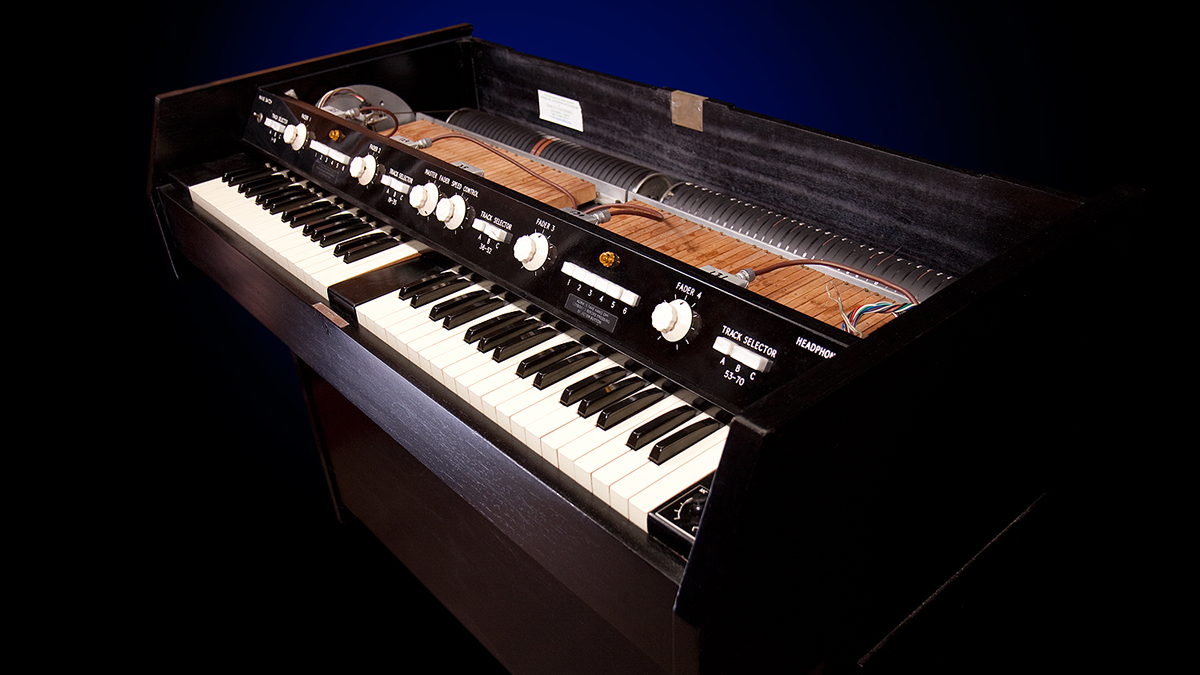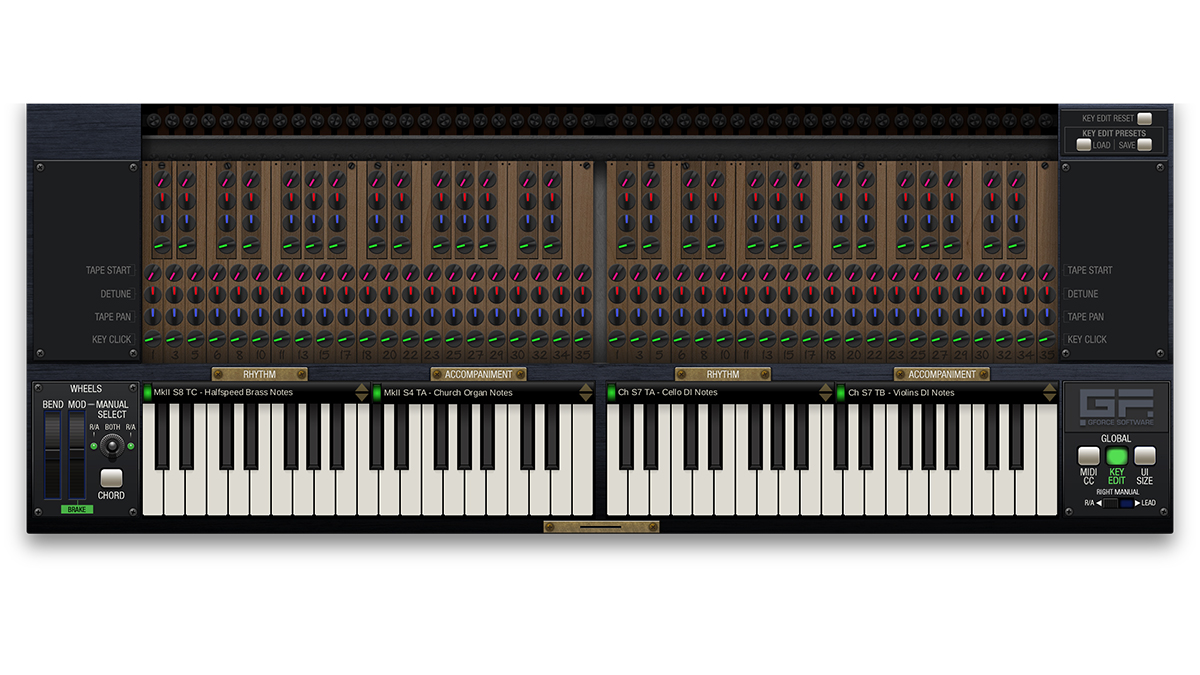GForce Software’s M-Tron MkII plugin tackles ‘the mother of all Mellotrons’
The last word in tape-based keyboard emulations?
GForce Software has introduced the M-Tron MkII, a new plugin emulation of the Mellotron MkI/MkII, which is considered by some to be the ‘Holy Grail’ of tape-based keyboards. This is designed to sit alongside rather than replace GForce’s existing M-Tron Pro instrument, which emulates the more commonly found Mellotron M400.
Released in 1963, but manufactured in very limited quantities, making it extremely rare, the MkI/MkII was a dual manual tape-based instrument that enabled you to trigger rhythms and accompaniments using 35 of the keys, and lead sounds on the other 35.
The original hardware came with 18 rhythms and accompaniments and 18 lead sounds, but the M-Tron MkII goes way beyond this by offering 66 of each. In fact, it comes with 132 tape-banks, some of which have never previously been released.

All the sounds in the M-Tron MkII are sourced from the MkI, MkII and Chamberlin Tape Archive, which is curated by Streetly Electronic’s Martin Smith. In fact, it was Smith who prepared the recordings, with the tapes being restored and tempos remapped for the project.
The upshot of this is that the mic’d and DI’d versions of the lead tapes sit side-by-side the rhythms and accompaniments; you can sync the latter to your host tempo and transpose to fit your current project.
There’s also a Dual Rhythm mode that enables you to layer two rhythms and accompaniments from the Chamberlin and Mellotron MkI and II, giving you the chance to create unique hybrids.
Given the way the M-Tron MkII is played, GForce recommends an 88-note keyboard for the most authentic experience, but you can also combine two smaller keyboards, with each assigned to a different MIDI channel.
Get the MusicRadar Newsletter
Want all the hottest music and gear news, reviews, deals, features and more, direct to your inbox? Sign up here.
Find out more on the GForce Software website. M-Tron MkII runs on PC and Mac in VST/AU/AAX formats, and also standalone. It’s available now for the introductory price of £200 plus VAT.




I’m the Deputy Editor of MusicRadar, having worked on the site since its launch in 2007. I previously spent eight years working on our sister magazine, Computer Music. I’ve been playing the piano, gigging in bands and failing to finish tracks at home for more than 30 years, 24 of which I’ve also spent writing about music and the ever-changing technology used to make it.
“Excels at unique modulated timbres, atonal drones and microtonal sequences that reinvent themselves each time you dare to touch the synth”: Soma Laboratories Lyra-4 review
“A superb-sounding and well thought-out pro-end keyboard”: Roland V-Stage 88 & 76-note keyboards review









